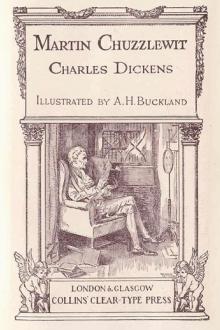Narrative of the Voyage of H.M.S. Rattlesnake, Commanded By the Late Captain Owe - Volume 1, John MacGillivray [read dune txt] 📗

- Author: John MacGillivray
Book online «Narrative of the Voyage of H.M.S. Rattlesnake, Commanded By the Late Captain Owe - Volume 1, John MacGillivray [read dune txt] 📗». Author John MacGillivray
free portion is much shorter. The branches in both are opposite; the ovicells are unfortunately absent in each.
8. S. mutulata, n. sp.
Cells compressed or flattened, from side to side; sometimes angular, lower half adnate, upper half divergent, projecting like a bracket. Mouth looking directly upwards, narrow oblong, quadrangular. Ovicells aculeate, with strong widely set spines, pyriform depressed.
Habitat: Prince of Wales Channel, Torres Strait, 9 fathoms.
Colour light olive grey. Polypidom about three inches high, irregularly ? branched, branches not opposite. The cells are distichous, and of a very peculiar form, but varying in some degree according to their situation. The younger (?) cells on the secondary branches are flat on the inferior or outer aspect, with two angles on each side, or are quadrangular; whilst the cells on the stems or older or fertile branches are usually rounded below, or on the outer side, and thus have only one angle on each side. The mouth varies in shape according to the cell; in the former case being a regular long rectangle, whilst in the latter it is rounded on the outer side. The ovicells are placed in a single series on one side of the rachis, as in S. digitalis, but are widely different in form.
9. S. operculata, Linn.
Habitat: Swan Island, Banks Strait.
This species occurs in all parts of the world. It is to be carefully distinguished from S. bispinosa, Gray-also an Australian and New Zealand species, but which does not occur in the present collection.
b. Cells (on the branches) secund, contiguous.
10. S. divergens, Lamouroux.
Cells urceolate, much contracted towards the mouth; upper half free, divergent, projecting laterally almost horizontally; mouth small elliptical, with the long axis looking directly outwards; two lateral teeth. Ovicell smooth, rounded, ovoid; oral margin not elevated.
Habitat: Swan Island, Banks Strait.
Colour light yellowish: parasitic upon a fucus. Height from 1/4 to 1/2 inch; simply pinnate, branches distant, regularly alternate. The stem is divided into internodes, from each of which arises a single branch. The cells on the stem are alternate.
b. Cells secund.
11. S. trigonostoma, n. sp.
Cells ovoid, gibbous, much contracted towards the mouth. Very small portion free, projecting forwards and outwards. Mouth looking outwards and forwards, triangular, with a short blunt tooth on the external angle. Ovicell -- ?
Habitat: Prince of Wales Channel, Torres Strait, 9 fathoms.
Colour very light yellowish. Polypidom simply pinnate, about two inches high: longest pinnae about half an inch. Cells small adnate, projecting suddenly at top, and much contracted at the mouth. The mouth is of a triangular form, the longest side of the triangle being below. The cells are placed in pairs, but one is always a little higher than the other (subalternate) and one pair is placed on each internode on the pinnae. The stem is also indistinctly divided into internodes, from each of which a single pinna is given off alternately on opposite sides, and besides the pinnae there are three cells on each internode, two on the side from which the pinna springs, and on the opposite side alternate in position to the other two.
12. S. digitalis, n. sp.
Cells digitiform, slightly curved to the front, mouth circular, looking directly upwards. Margin entire, expanded. Ovicells long-ovoid, muricate, spines numerous crowded, mouth prolonged, tubular.
Habitat Prince of Wales Channel, Torres Strait, 9 fathoms.
Colour dark grey, almost black. Stem two or three inches high, rising either from a strong main trunk (?) or from a mass of intertwined radical tubes. Stems or branches pinnate: pinnae or branches alternate, straight, divaricate. The cells forming a pair, are, on the branches, adnate to each other throughout their whole length. But on the stem the cells are distichous and wide apart. The ovicells are peculiar in their long flask-like form, and tubular mouth. They are placed all on one side of the rachis, generally in single file, but sometimes in pairs.
13. S. loculosa, n. sp.
D. distans ? Lamouroux.
Cells completely adnate to each other, each apparently divided into two compartments by a transverse constriction. Upper half turned horizontally outwards. Mouth roundish, irregular, contracted: looking outwards, and a little downwards. Ovicell -- ?
Habitat: Bass Strait, 45 fathoms.
Colour deep brown; polypidom simple unbranched (?) about half an inch high, parasitic upon a broad-leaved fucus. The cells are so closely conjoined as to form but one triangular body, which appears as if divided into five loculaments by transverse constriction. The upper apparent constriction however seems merely to indicate the line of flexure of the upper part of the cell upon the lower. The form of the conjoined cells is not unlike Lamouroux' figure of S. (D.)distans; but the present is clearly not that species.
14. S. unguiculata, n. sp.
Cells urceolate, upper half free, projecting in front, and much contracted towards the mouth; elliptical, with the long axis horizontal, looking forwards and a little outwards; two long lateral teeth, the outer the longer and usually incurved. Ovicell ovoid; mouth wide, with a much elevated, thickened border.
Habitat: Swan Island, Banks Strait, thrown on the beach.
Colour bright brown; polypidom pinnate; the stems arising from creeping radical tubes, very thickly intertwined around a long slender body. The stems are from one to four inches long, the pinnae about 1/4 to 1/2 inch, alternate. The rachis of the stem is divided into distinct internodes, from each of which are given off two pinnae, and upon which are also placed usually six cells, three on either side. The pinnae are also divided, but less distinctly, into internodes of various lengths. The pairs of cells on the pinnae are all secund, and in contact with each other at their bases, though widely divergent above.
15. S. tridentata, n. sp.
Cells urceolate, ventricose below, contracted towards the mouth. Mouth looking forwards and outwards, circular, with three acute teeth, two lateral, longer than the third, which is above.
Habitat: Bass Strait, 45 fathoms.
Colour yellowish white. Polypidom simply pinnate, about 2 1/2 inches high; pinnae in the middle 3/4 of an inch. The cells are ventricose below, and almost flask-shaped. The two lateral teeth are long, acute, and slightly everted; the upper third tooth is sharp, but not near as long as the others; the border of the mouth is as it were excavated below, so that the mouth is as nearly as possible vertical. Contrary to what is the case in S. divergens, but exactly as is represented in Savigny's figures of the so-called S. disticha (Egypt plate 14 figures 2 and 3); and S. distans (Egypt plate 14 figures 1 and 3) the lateral teeth are sloped or bevelled off from below upwards, and not from above downwards, as in S. divergens (Mihi).
2. Pasythea, Lamouroux.
Cells in distinct sets, at some distance apart.
1. P. hexodon, n. sp.
Cells in sets of six-three on each side; a single axillary cell in each dichotomous division of the polypidom. Ovicell pedunculate ovoid, adnate to the rachis, with a lateral opening.
Habitat: Off Cumberland Isles, 27 fathoms.
As this differs in the number of cells in each set, as well as in the form of the cells, and in the form and position of the ovicell, it appears irreconcilable with Lamouroux' P. quadridentata. According to the figure given of the latter the ovicell is not adnate, and is spirally grooved.
3. PLUMULARIA, Lamarck.
a. Angiocarpeae-ovicells enclosed in siliquose, costate receptacles.
1. P. huxleyi, n. sp.
Plumularia-Huxley, Philosophical Transactions Part 2 1849 page 427 plate 39 figures 43 and 45.
Cells cup-shaped, shallow; mouth nearly vertical, subquadrangular, margin subcrenate, plicate; with a small acute central denticle in front, and a wide shallow notch behind. Rostrum twice as long as the cell, arising from the rachis by a broad ventricose base, adnate the whole length of the cell, narrow upwards and slightly expanded again at the summit; lateral processes very short and wide, canalicular adnate. Costae of ovarian receptacle numerous, each with a single branch near the bottom, and beset with small cup-like processes, and not connected by a membrane.
Habitat: Port Curtis. Off Cumberland Islands, in 27 fathoms fine grey mud.
Colour yellowish white. Polypidom about 6 inches high, rising with a single flexuose stem, which is naked at bottom, and afterwards gives off alternate branches, bifariously disposed at each angular flexure. Branches simple, 2 to 3 inches long; pinnules about 1/4 inch. The construction of the ovarian receptacle in the present section of the genus Plumularia is well exemplified in this species, owing to the comparative simplicity of the elements of which it is composed.
2. P. hians, n. sp.
Cell cup-shaped, deep, cylindrical; mouth nearly vertical; margin with three teeth on each side, the middle one the longest, acute, much expanded, the other more rounded; a wide notch posteriorly. Rostrum, arising from the rachis, as long as the cell, slender, tubular, adnate; lateral processes very small, ovarian receptacles -- ?
Habitat: Prince of Wales Channel, Torres Strait, in 9 fathoms.
Colour bright brown, rachis shining, very dark brown; polypidom about six inches high, simply pinnulate, pinnules about half an inch; thickly and regularly disposed, alternate.
3. P. delicatula, n. sp.
Cell cup-shaped, rounded, mouth at an angle of 45 degrees; margin dentate, with two lateral teeth of equal size and a central one in front longer, all acute; entire posteriorly. Rostrum a little longer than the cell, scarcely connected with the rachis, slender, and closely adpressed and adnate to the cell below, wide and projecting upwards; lateral processes large, rising above the margin of the cell, conical, tubular, or canalicular.
Habitat: Prince of Wales Channel, Torres Strait, in 9 fathoms.
Colour of rachis and pinnules, delicate yellowish white above; of rachis, light brown, inferiorly; polypidom about two inches high, rising in several straight simply pinnulated fronds from a common centre; pinnules ascending about 1/4 inch.
4. P. aurita, n. sp.
Cells cup-shaped, tapering at bottom, constricted just below the top; mouth at an angle of 45 degrees, circular; margin subcrenate, plicate, with three folds on each side, with a wide shallow notch in front and entire behind. Rostrum, slender, attenuated below, adnate up to the cell, summit contracted, tubular; lateral processes very long, expanding, rising far above the margin of the cell, conical, tubular.
Habitat: Off Cumberland Isles, 27 fathoms.
Colour bright brown; polypidom 2 to 3 inches high, consisting of straight pinnate fronds, pinnae or branches not opposite, nor regularly alternate, divaricate at rightangles.
5. P. brevirostris, n. sp.
Cell sub-tubular, curved; mouth expanded with two equal acute teeth on each side, and a longer narrow and slightly incurved, central one in front. Rostrum small, conical, projecting, about half the length of the cell; lateral processes small, recurved at an angle, canalicular.
Habitat: Off Cumberland Isles, 27 fathoms.
Colour dirty white. In habit, and to the naked eye, very much like the last; its growth, however, appears to be longer and less regular. The difference in the cell is very great.
6. P. ramosa, n. sp.
Cells cup-shaped, deep, rounded at bottom; margin elevated on the sides, expanding, with four teeth on each side, the first and second in front much expanded, acute, incurved at the point; a long slender incurved central tooth in front; margin entire behind. Rostrum not continued to the rachis, adnate the whole length of the cell, wide and projecting, narrowed to the point, which is tubular, opening oblique, longer than the cell; lateral processes conical, short, tubular, closely adnate. Costae of ovarian receptacle with short opposite tubular branches; NOT connected by a membrane.
Habitat: Swan Island, Banks Strait,
8. S. mutulata, n. sp.
Cells compressed or flattened, from side to side; sometimes angular, lower half adnate, upper half divergent, projecting like a bracket. Mouth looking directly upwards, narrow oblong, quadrangular. Ovicells aculeate, with strong widely set spines, pyriform depressed.
Habitat: Prince of Wales Channel, Torres Strait, 9 fathoms.
Colour light olive grey. Polypidom about three inches high, irregularly ? branched, branches not opposite. The cells are distichous, and of a very peculiar form, but varying in some degree according to their situation. The younger (?) cells on the secondary branches are flat on the inferior or outer aspect, with two angles on each side, or are quadrangular; whilst the cells on the stems or older or fertile branches are usually rounded below, or on the outer side, and thus have only one angle on each side. The mouth varies in shape according to the cell; in the former case being a regular long rectangle, whilst in the latter it is rounded on the outer side. The ovicells are placed in a single series on one side of the rachis, as in S. digitalis, but are widely different in form.
9. S. operculata, Linn.
Habitat: Swan Island, Banks Strait.
This species occurs in all parts of the world. It is to be carefully distinguished from S. bispinosa, Gray-also an Australian and New Zealand species, but which does not occur in the present collection.
b. Cells (on the branches) secund, contiguous.
10. S. divergens, Lamouroux.
Cells urceolate, much contracted towards the mouth; upper half free, divergent, projecting laterally almost horizontally; mouth small elliptical, with the long axis looking directly outwards; two lateral teeth. Ovicell smooth, rounded, ovoid; oral margin not elevated.
Habitat: Swan Island, Banks Strait.
Colour light yellowish: parasitic upon a fucus. Height from 1/4 to 1/2 inch; simply pinnate, branches distant, regularly alternate. The stem is divided into internodes, from each of which arises a single branch. The cells on the stem are alternate.
b. Cells secund.
11. S. trigonostoma, n. sp.
Cells ovoid, gibbous, much contracted towards the mouth. Very small portion free, projecting forwards and outwards. Mouth looking outwards and forwards, triangular, with a short blunt tooth on the external angle. Ovicell -- ?
Habitat: Prince of Wales Channel, Torres Strait, 9 fathoms.
Colour very light yellowish. Polypidom simply pinnate, about two inches high: longest pinnae about half an inch. Cells small adnate, projecting suddenly at top, and much contracted at the mouth. The mouth is of a triangular form, the longest side of the triangle being below. The cells are placed in pairs, but one is always a little higher than the other (subalternate) and one pair is placed on each internode on the pinnae. The stem is also indistinctly divided into internodes, from each of which a single pinna is given off alternately on opposite sides, and besides the pinnae there are three cells on each internode, two on the side from which the pinna springs, and on the opposite side alternate in position to the other two.
12. S. digitalis, n. sp.
Cells digitiform, slightly curved to the front, mouth circular, looking directly upwards. Margin entire, expanded. Ovicells long-ovoid, muricate, spines numerous crowded, mouth prolonged, tubular.
Habitat Prince of Wales Channel, Torres Strait, 9 fathoms.
Colour dark grey, almost black. Stem two or three inches high, rising either from a strong main trunk (?) or from a mass of intertwined radical tubes. Stems or branches pinnate: pinnae or branches alternate, straight, divaricate. The cells forming a pair, are, on the branches, adnate to each other throughout their whole length. But on the stem the cells are distichous and wide apart. The ovicells are peculiar in their long flask-like form, and tubular mouth. They are placed all on one side of the rachis, generally in single file, but sometimes in pairs.
13. S. loculosa, n. sp.
D. distans ? Lamouroux.
Cells completely adnate to each other, each apparently divided into two compartments by a transverse constriction. Upper half turned horizontally outwards. Mouth roundish, irregular, contracted: looking outwards, and a little downwards. Ovicell -- ?
Habitat: Bass Strait, 45 fathoms.
Colour deep brown; polypidom simple unbranched (?) about half an inch high, parasitic upon a broad-leaved fucus. The cells are so closely conjoined as to form but one triangular body, which appears as if divided into five loculaments by transverse constriction. The upper apparent constriction however seems merely to indicate the line of flexure of the upper part of the cell upon the lower. The form of the conjoined cells is not unlike Lamouroux' figure of S. (D.)distans; but the present is clearly not that species.
14. S. unguiculata, n. sp.
Cells urceolate, upper half free, projecting in front, and much contracted towards the mouth; elliptical, with the long axis horizontal, looking forwards and a little outwards; two long lateral teeth, the outer the longer and usually incurved. Ovicell ovoid; mouth wide, with a much elevated, thickened border.
Habitat: Swan Island, Banks Strait, thrown on the beach.
Colour bright brown; polypidom pinnate; the stems arising from creeping radical tubes, very thickly intertwined around a long slender body. The stems are from one to four inches long, the pinnae about 1/4 to 1/2 inch, alternate. The rachis of the stem is divided into distinct internodes, from each of which are given off two pinnae, and upon which are also placed usually six cells, three on either side. The pinnae are also divided, but less distinctly, into internodes of various lengths. The pairs of cells on the pinnae are all secund, and in contact with each other at their bases, though widely divergent above.
15. S. tridentata, n. sp.
Cells urceolate, ventricose below, contracted towards the mouth. Mouth looking forwards and outwards, circular, with three acute teeth, two lateral, longer than the third, which is above.
Habitat: Bass Strait, 45 fathoms.
Colour yellowish white. Polypidom simply pinnate, about 2 1/2 inches high; pinnae in the middle 3/4 of an inch. The cells are ventricose below, and almost flask-shaped. The two lateral teeth are long, acute, and slightly everted; the upper third tooth is sharp, but not near as long as the others; the border of the mouth is as it were excavated below, so that the mouth is as nearly as possible vertical. Contrary to what is the case in S. divergens, but exactly as is represented in Savigny's figures of the so-called S. disticha (Egypt plate 14 figures 2 and 3); and S. distans (Egypt plate 14 figures 1 and 3) the lateral teeth are sloped or bevelled off from below upwards, and not from above downwards, as in S. divergens (Mihi).
2. Pasythea, Lamouroux.
Cells in distinct sets, at some distance apart.
1. P. hexodon, n. sp.
Cells in sets of six-three on each side; a single axillary cell in each dichotomous division of the polypidom. Ovicell pedunculate ovoid, adnate to the rachis, with a lateral opening.
Habitat: Off Cumberland Isles, 27 fathoms.
As this differs in the number of cells in each set, as well as in the form of the cells, and in the form and position of the ovicell, it appears irreconcilable with Lamouroux' P. quadridentata. According to the figure given of the latter the ovicell is not adnate, and is spirally grooved.
3. PLUMULARIA, Lamarck.
a. Angiocarpeae-ovicells enclosed in siliquose, costate receptacles.
1. P. huxleyi, n. sp.
Plumularia-Huxley, Philosophical Transactions Part 2 1849 page 427 plate 39 figures 43 and 45.
Cells cup-shaped, shallow; mouth nearly vertical, subquadrangular, margin subcrenate, plicate; with a small acute central denticle in front, and a wide shallow notch behind. Rostrum twice as long as the cell, arising from the rachis by a broad ventricose base, adnate the whole length of the cell, narrow upwards and slightly expanded again at the summit; lateral processes very short and wide, canalicular adnate. Costae of ovarian receptacle numerous, each with a single branch near the bottom, and beset with small cup-like processes, and not connected by a membrane.
Habitat: Port Curtis. Off Cumberland Islands, in 27 fathoms fine grey mud.
Colour yellowish white. Polypidom about 6 inches high, rising with a single flexuose stem, which is naked at bottom, and afterwards gives off alternate branches, bifariously disposed at each angular flexure. Branches simple, 2 to 3 inches long; pinnules about 1/4 inch. The construction of the ovarian receptacle in the present section of the genus Plumularia is well exemplified in this species, owing to the comparative simplicity of the elements of which it is composed.
2. P. hians, n. sp.
Cell cup-shaped, deep, cylindrical; mouth nearly vertical; margin with three teeth on each side, the middle one the longest, acute, much expanded, the other more rounded; a wide notch posteriorly. Rostrum, arising from the rachis, as long as the cell, slender, tubular, adnate; lateral processes very small, ovarian receptacles -- ?
Habitat: Prince of Wales Channel, Torres Strait, in 9 fathoms.
Colour bright brown, rachis shining, very dark brown; polypidom about six inches high, simply pinnulate, pinnules about half an inch; thickly and regularly disposed, alternate.
3. P. delicatula, n. sp.
Cell cup-shaped, rounded, mouth at an angle of 45 degrees; margin dentate, with two lateral teeth of equal size and a central one in front longer, all acute; entire posteriorly. Rostrum a little longer than the cell, scarcely connected with the rachis, slender, and closely adpressed and adnate to the cell below, wide and projecting upwards; lateral processes large, rising above the margin of the cell, conical, tubular, or canalicular.
Habitat: Prince of Wales Channel, Torres Strait, in 9 fathoms.
Colour of rachis and pinnules, delicate yellowish white above; of rachis, light brown, inferiorly; polypidom about two inches high, rising in several straight simply pinnulated fronds from a common centre; pinnules ascending about 1/4 inch.
4. P. aurita, n. sp.
Cells cup-shaped, tapering at bottom, constricted just below the top; mouth at an angle of 45 degrees, circular; margin subcrenate, plicate, with three folds on each side, with a wide shallow notch in front and entire behind. Rostrum, slender, attenuated below, adnate up to the cell, summit contracted, tubular; lateral processes very long, expanding, rising far above the margin of the cell, conical, tubular.
Habitat: Off Cumberland Isles, 27 fathoms.
Colour bright brown; polypidom 2 to 3 inches high, consisting of straight pinnate fronds, pinnae or branches not opposite, nor regularly alternate, divaricate at rightangles.
5. P. brevirostris, n. sp.
Cell sub-tubular, curved; mouth expanded with two equal acute teeth on each side, and a longer narrow and slightly incurved, central one in front. Rostrum small, conical, projecting, about half the length of the cell; lateral processes small, recurved at an angle, canalicular.
Habitat: Off Cumberland Isles, 27 fathoms.
Colour dirty white. In habit, and to the naked eye, very much like the last; its growth, however, appears to be longer and less regular. The difference in the cell is very great.
6. P. ramosa, n. sp.
Cells cup-shaped, deep, rounded at bottom; margin elevated on the sides, expanding, with four teeth on each side, the first and second in front much expanded, acute, incurved at the point; a long slender incurved central tooth in front; margin entire behind. Rostrum not continued to the rachis, adnate the whole length of the cell, wide and projecting, narrowed to the point, which is tubular, opening oblique, longer than the cell; lateral processes conical, short, tubular, closely adnate. Costae of ovarian receptacle with short opposite tubular branches; NOT connected by a membrane.
Habitat: Swan Island, Banks Strait,
Free e-book «Narrative of the Voyage of H.M.S. Rattlesnake, Commanded By the Late Captain Owe - Volume 1, John MacGillivray [read dune txt] 📗» - read online now
Similar e-books:





Comments (0)